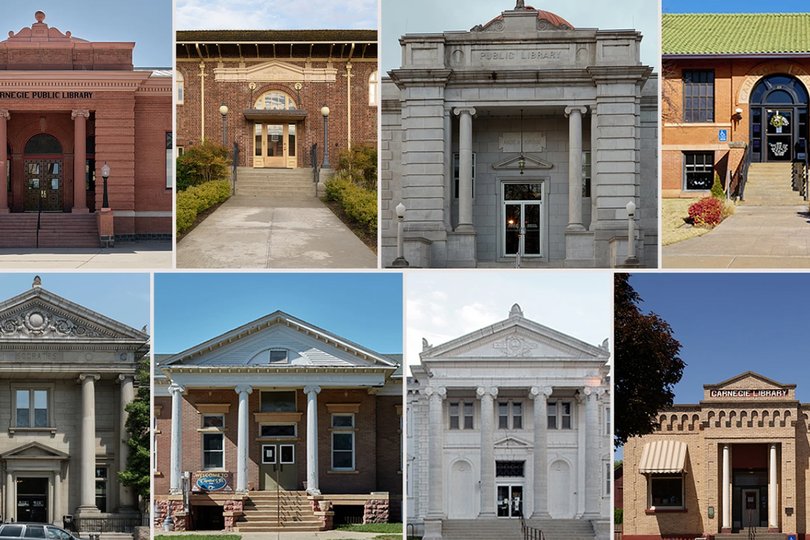Centerpiece of neighborhood’s post-Katrina redevelopment plan is social, educational and cultural hub.
Sometimes great ideas come out of doublewide trailers. When residents of the Broadmoor neighborhood in New Orleans created their redevelopment plan in 2006, they envisioned a library/community center that would anchor the neighborhood’s “Education Corridor.” The corridor runs through General Pershing Street from the recently –renovated Andrew H. Wilson Charter School to the library/center and will eventually include the Fine Arts & Wellness Center. Much of the plan was written in a doublewide trailer, the then temporary home of the Broadmoor Improvement Association (BIA) a local association representing the economically and racially diverse Broadmoor neighborhood.
On Friday, March 16, at 2:30 p.m., New Orleans Mayor Mitch Landrieu and other officials, including District B Councilwoman Stacy Head; Dr. Vartan Gregorian, president of Carnegie Corporation of New York and BIA President LaToya Cantrell will cut the ribbon on the new Rosa F. Keller Library and Community Center, 4300 South Broad Street. The doors will officially open to the public at 10 a.m. Saturday, March 17.
“Before Hurricane Katrina, we had a mediocre library at best. But thanks to our numerous funders, especially Carnegie Corporation of New York, which donated $2 million to this project under the auspices of the Clinton Global Initiative, we were able to dream big,” Cantrell says. “Our center combines the old with the new: an historic home attached to a new environmentally efficient and storm resistant building. This center will offer something for everybody: children, seniors, urban professionals, families, rich, poor, white and black. It’s Broadmoor’s “cradle to the grave” approach, ensuring that all community members benefit from our efforts.”
“Broadmoor's vision for a rebuilt Rosa F. Keller Library and Community Center is an inspiring example of a community seizing the initiative to restore and rebuild what Hurricane Katrina took away,” says Vartan Gregorian, president of Carnegie Corporation of New York. “Andrew Carnegie believed that libraries are essential to the strength and progress of American society because they democratize access to information and knowledge, they empower local communities, and they empower individuals to fulfill their aspirations and their potential. Today, the Rosa F. Keller Library and Community Center stands as a testament to those ideals, and we celebrate the strength of this community and of the people who never lost faith that it would rise again.”
In addition to the Broadmoor grant, Carnegie Corporation of New York previously awarded $12 million in grants to help strengthen the city’s academic infrastructure—its institutions of higher education and K-12 teacher pool. Grants were made to Dillard University, Tulane University and Xavier University of Louisiana, as well as to Teach For America.
The Green Dot Café, Broadmoor’s coffee shop located inside the center, proves what Cantrell describes. Comfortable, stylish and accessible with ample parking, the café will give professionals and students a place to congregate for meetings or simply grab coffee, pastries or lunch on the go. When asked about the unusual name, Ryan Haro, the café’s purveyor, says, it was the Broadmoor community that chose it.
“In early 2006, the infamously-named Bring New Orleans Back Committee drew a green dot around Broadmoor, suggesting the neighborhood be bulldozed into a drainage park. We now see this Green Dot as a sign of rebirth and the strength of our community,” Haro says.
The center also houses a demonstration kitchen, plenty of community space, an outdoor reading garden, classrooms for literacy and computer classes and the library, which will provide DVDs, books, CDs, magazines, newspapers and a variety of computer databases. The former home, a national historic landmark, is an Arts and Crafts bungalow and contains numerous classic architectural aspects such as high ceilings, large open windows, a solarium and detailed woodwork.
The U.S. Green Building Council will rate the center as LEED-certified silver. The design for Keller includes several key environmentally responsible design strategies, the most noticeable of which was the creation of a large bioswale on the site that manages significant storm water run off on the site, allowing for a minimized impact to the City’s stormwater infrastructure, a key issue here in New Orleans. This bioswale is located on the Broad Street side of the site and was designed with the help of Spackman Mossop + Michaels landscape Architects. Another sustainable design strategy incorporated includes the incorporation of low-e glazer throughout the facility to help suppress radiative heat flow inside while also allowing the building to provide significant daylight for its user satisfaction and energy use reduction.
Cantrell says the center should be a model for all New Orleans public libraries.
“Look, we have a dedicated community, but that community requires a neutral place to meet, learn and share. That’s what this represents and will provide, and it’s something that everyone in New Orleans needs and deserves. And to think this started with a few people sitting in a trailer,” Cantrell says.


